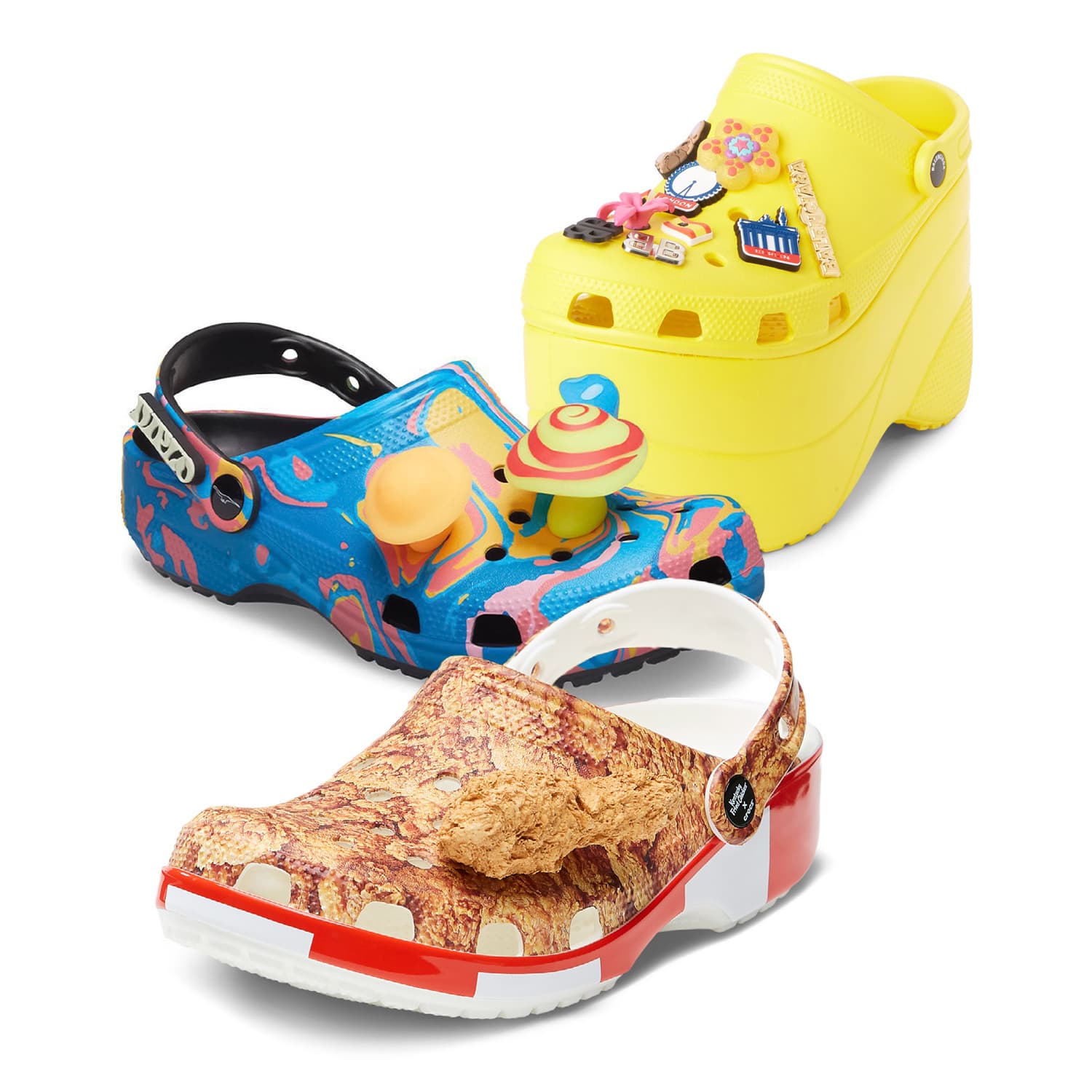How Crocs Made a Comeback Through Cultish, Campy Collabs

Back in the early aughts, a Colorado-based foam-footwear brand became synonymous with two things: functionality and a striking lack of flair. Crocs were inspired by designs that its founders acquired from a company in Quebec City called Foam Creations. They were never meant to be stylish—in fact, they were originally intended to be boat shoes. But the gnomish slip-ons quickly became fodder for magazines, blogs and late-night TV shows, all of which contributed to the consensus that Crocs were a shoe not to be caught dead in. And despite remaining an acceptable footwear option for kids—their cartoon colours and collectible “Jibbitz” charms gave them staying power among the under-10 crowd—by 2009, eight years after producing its first pair, the company announced plant closures and layoffs.
Flash forward a decade and sales are booming. Not only that, Crocs are showing up everywhere, including runways, red carpets (Questlove wore a gilded pair to this year’s Oscars) and celebrity social-media feeds. So, what changed? Certainly not the look. While Crocs now come in a variety of styles like flip-flops and even ankle boots, they are still undeniably ugly.
Crocs’ second coming began in 2016 when its jaw-dropping union with designer Christopher Kane was unveiled during London Fashion Week. It has been powered by a clever string of collaborations—with pop stars like Justin Bieber, luxury fashion houses like Balenciaga and food brands like Kentucky Fried Chicken—that not only lean into Crocs’ very garishness but take it over the top. (The KFC Jibbitz charms smelled like fried chicken.)
Crocs cultivates desire by producing limited editions of its collaborations and giving very little notice before their on-sale date. That’s been especially appealing to the all-important Gen Z consumer, a demographic that can’t wait to show their TikTok followers how they scooped up a pair. “New customers may initially seek us out for a limited-edition drop,” says Molly Wilhelm, director of product line management. “But it’s our hope that once they discover us, they’ll become more open to the brand and take a chance on the other styles.”
The strategy is paying off. The company had record revenues of $1.4 billion US in 2020, and reported a 93 per cent increase from Q2 2020 to Q2 2021. Crocs did more than two dozen collabs during that period. The partnerships are bizarrely wide ranging, the wackier the better. A recent collab with DJ and producer Diplo spawned tie-dye Crocs that sprouted glow-in-the-dark toadstools. Another pair, with L.A.-based brand Chinatown Market, were completely covered in plastic turf, inside and out. But it’s the niche collections, like 2019’s partnership with Japanese artist Takashi Murakami, that are pushing the craze to extremes. Pairs of the $70 US shoes are still going for more than $1,000 on resale sites.